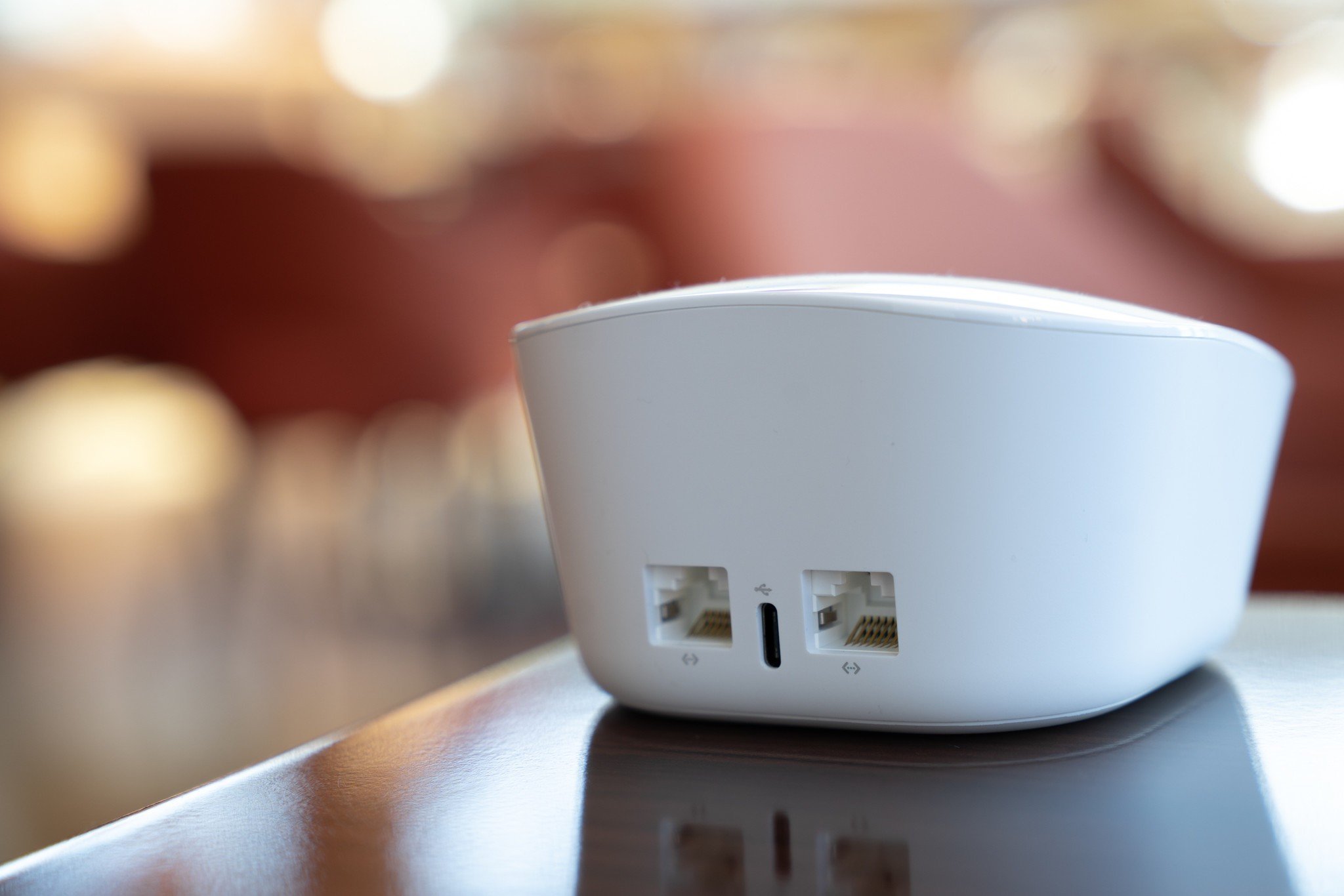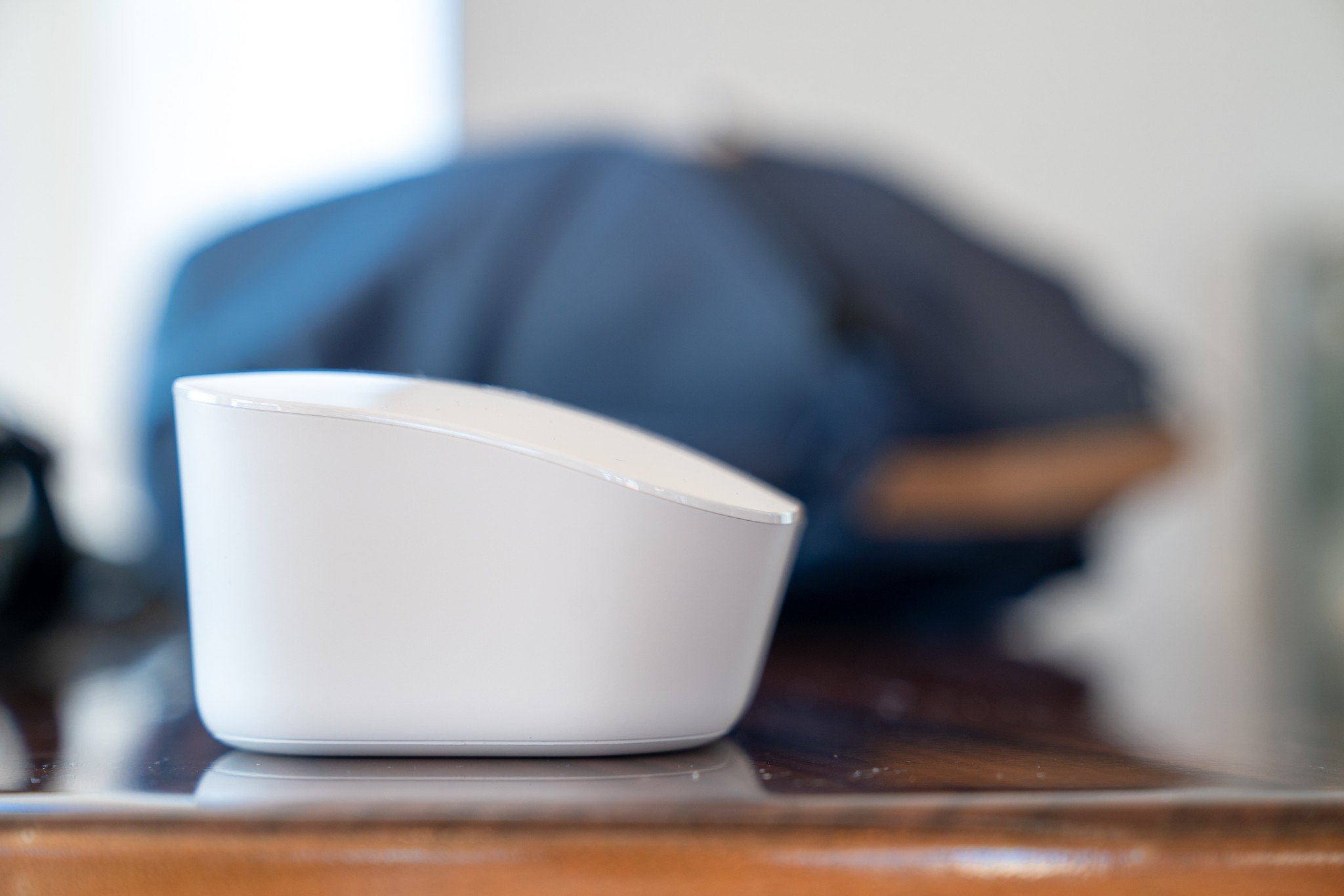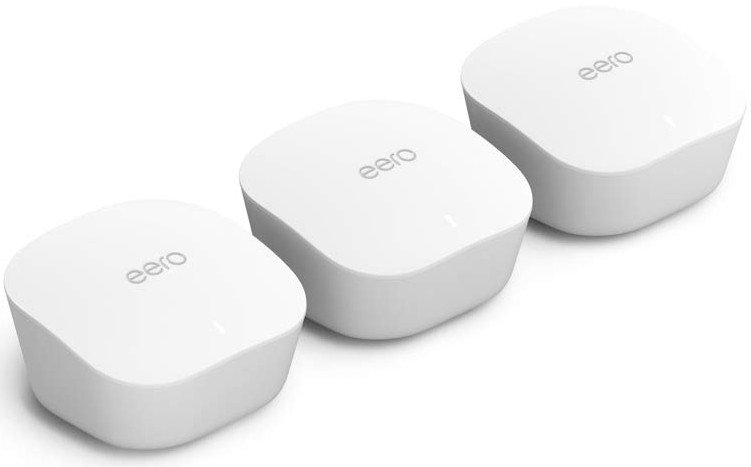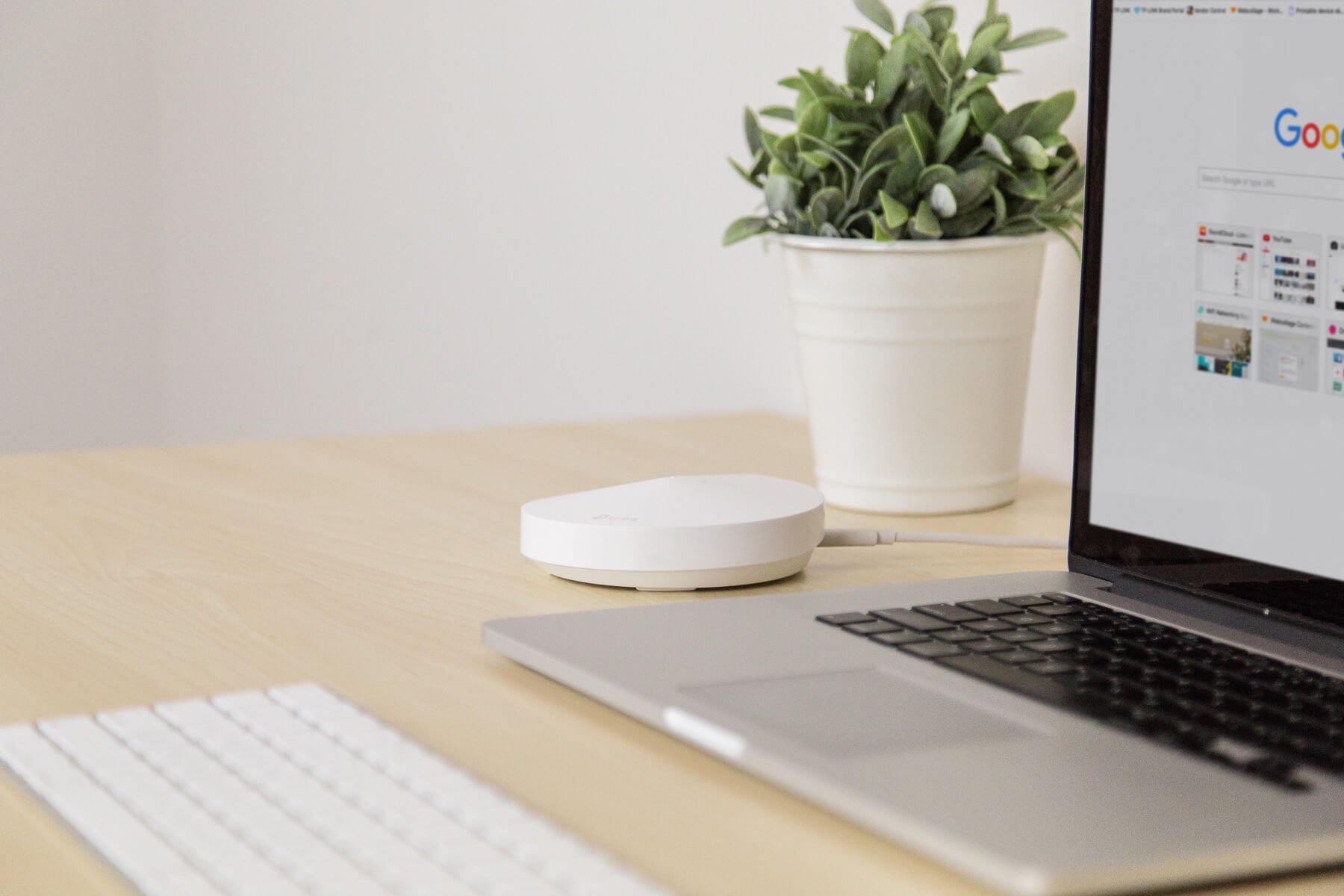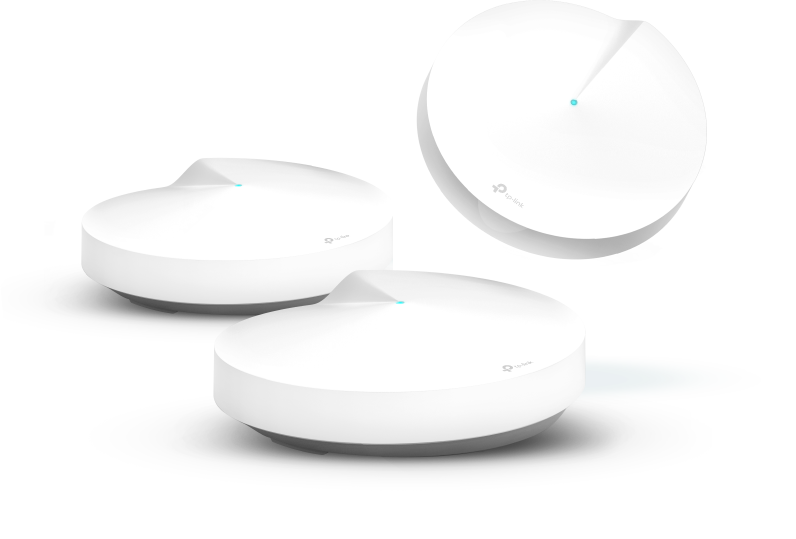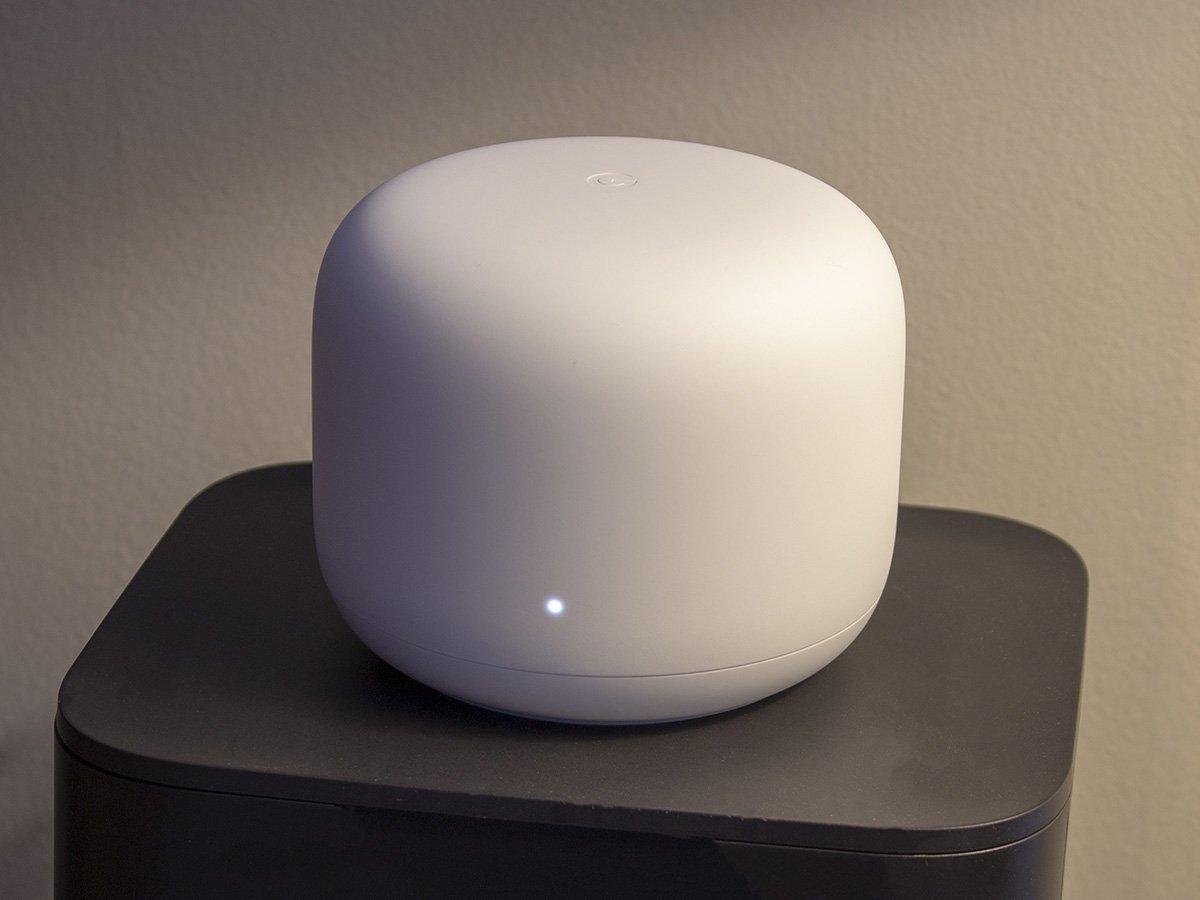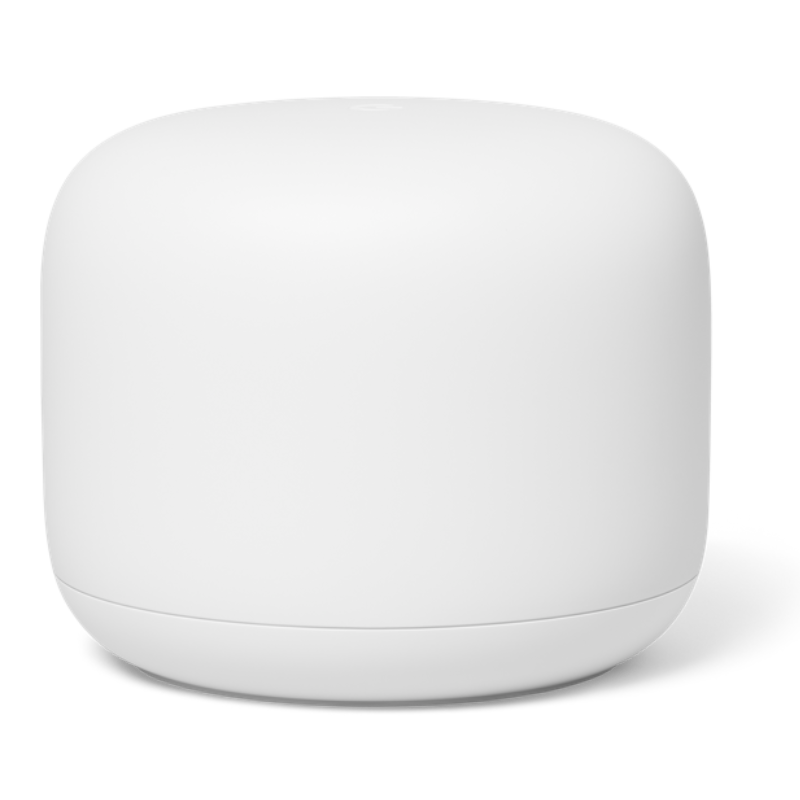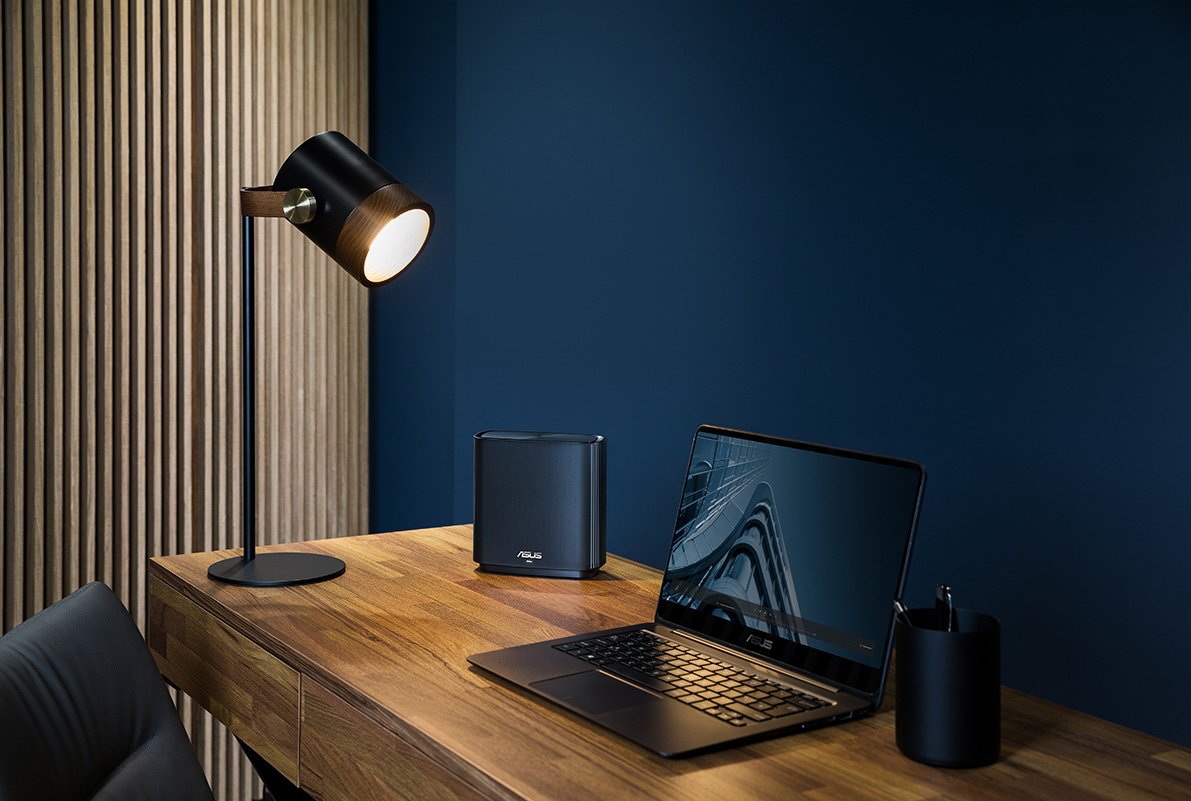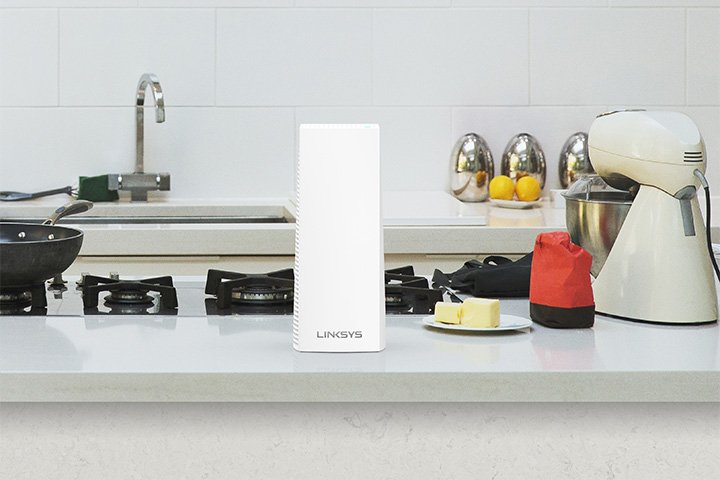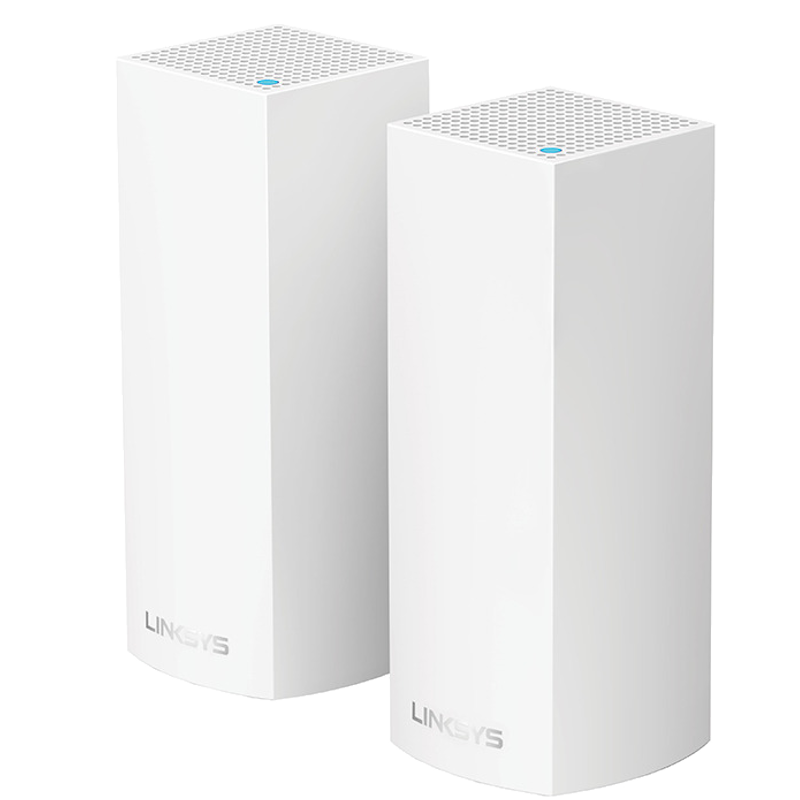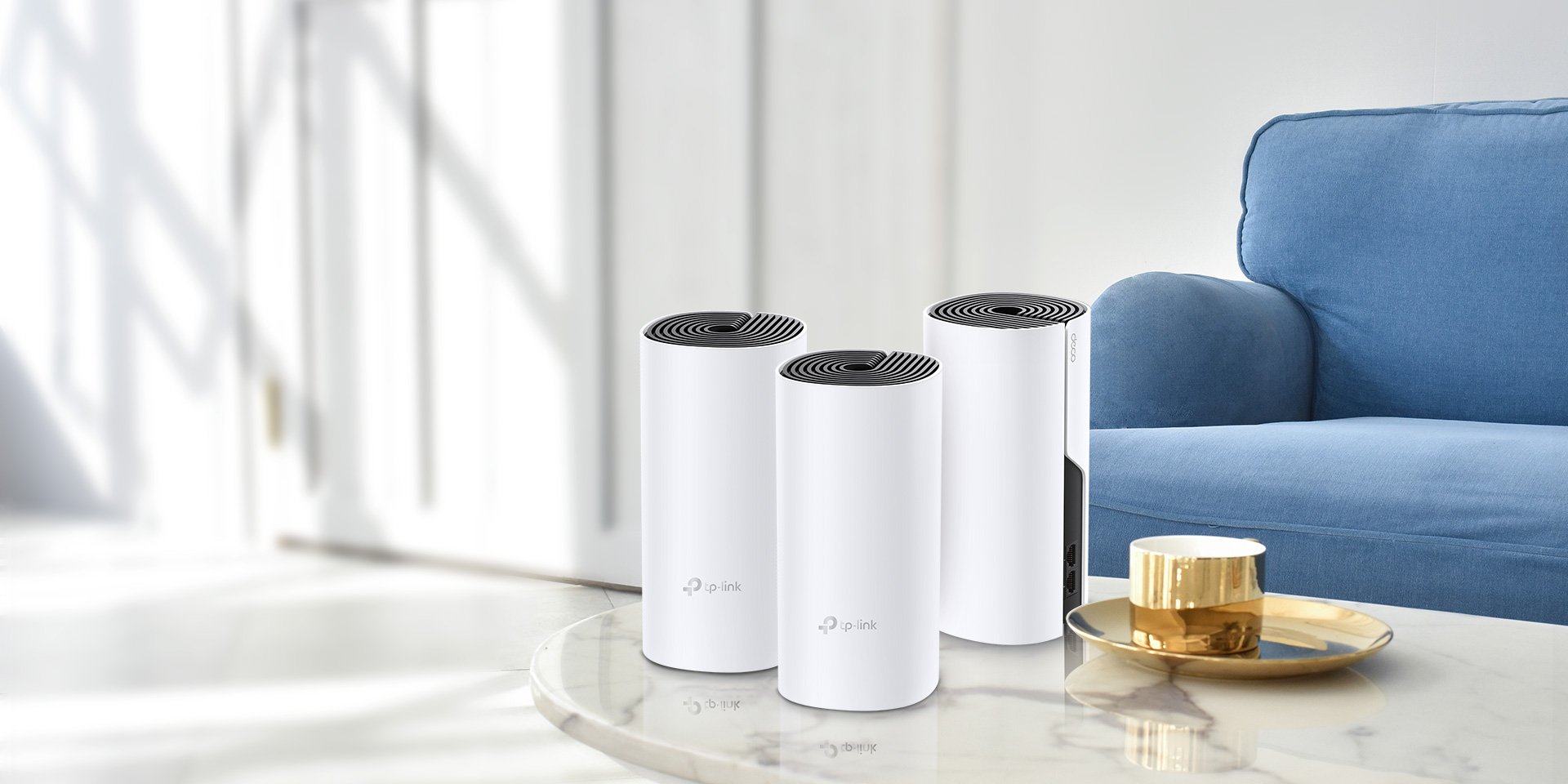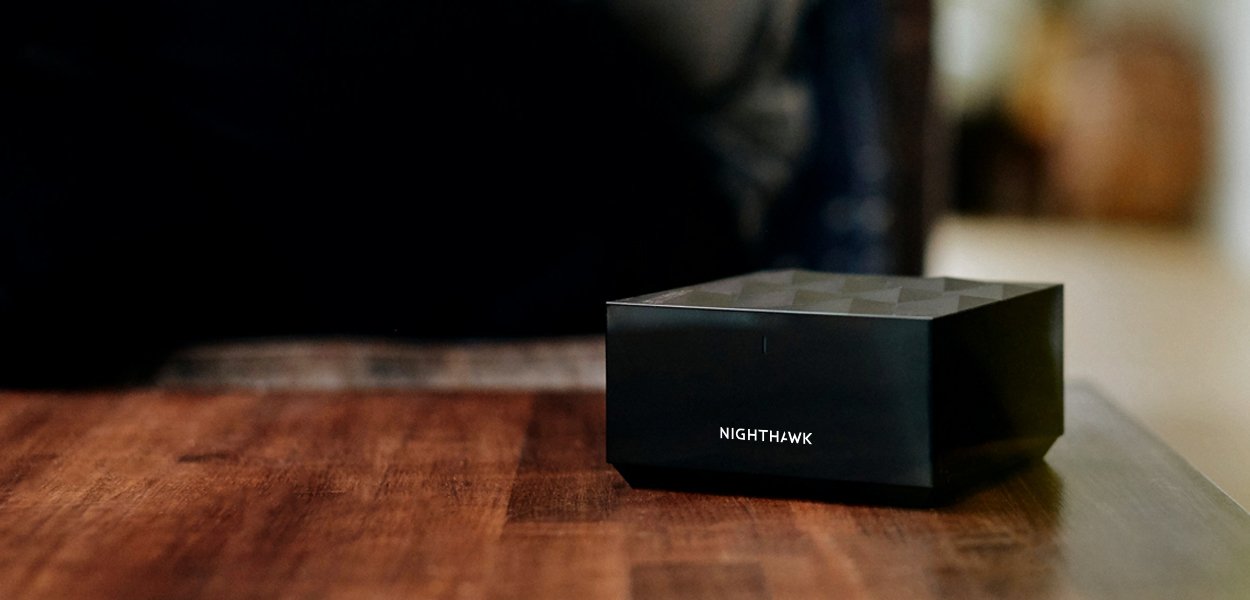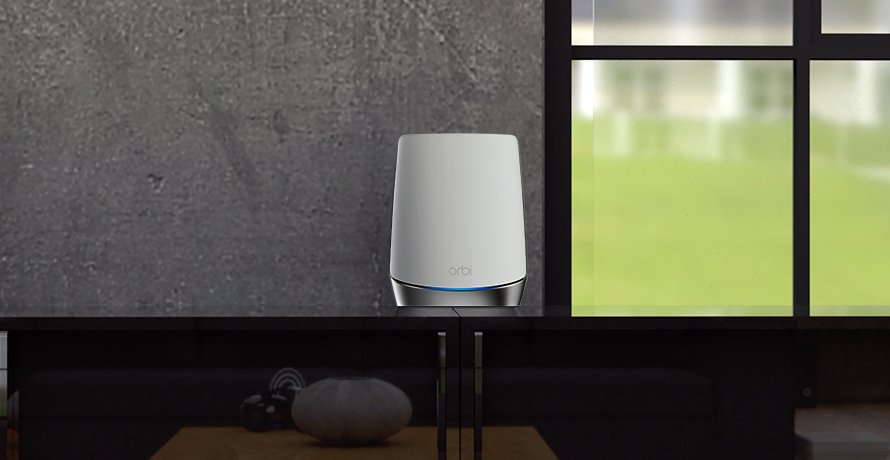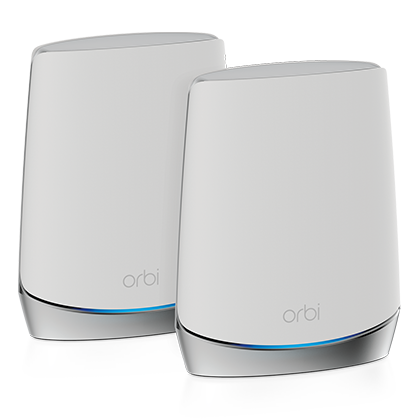- Get link
- X
- Other Apps
- Get link
- X
- Other Apps
Mesh Wi-Fi systems are the networking versions of working smarter, not harder. Compared to a traditional router, mesh systems use several smaller Wi-Fi routers placed around your home to cover you from multiple angles and dodge things like thick walls that can kill your signal. Whether you want top speed and customizability or simplicity and consistency, there's a mesh system that will work in any home. The Eero hits all of the sweet spots of a Wi-Fi system in a small understated housing that loses obtrusive articulating antennas.
Best Overall: eero
Eero made one of the first consumer mesh Wi-Fi systems and the company keeps making them better with each revision. The current generation has the best blend of advanced networking features of any system available thanks to the small size and compatibility with the wall-plug Eero Beacon.
Eero isn't trying to be the fastest router. Its main goal is to offer a solid and reliable connection. To most people, the speeds will be fast enough for all browsing and streaming, including 4K content. There are also two Ethernet ports on each unit if you need it.
If you need a bit more speed, you can go and step up and start with the faster Eero Pro. The best part is that all eeros are compatible so you can focus on speed where you need it and keep things compact where you don't need as much.
Pros:
- Can use an unlimited amount of beacons
- Small and easy to place
- Two Ethernet on each unit
- Great Android and iOS app
Cons:
- Limited "power-user" settings
- Not as fast as the competition
Best Overall
Eero (3-pack)
Small and powerful
Eero creates a great Wi-Fi experience with a simple and stylish appearance and flexible expansion.
Best Value: TP-Link Deco M5
If you want to set up a mesh network that covers the whole house (up to 5,500 square feet) and don't want to break the bank, grab a TP-Link Deco three-pack. You'll get whole-house coverage without ever-changing networks or hopping onto an extender, plus features like prioritizing and parental control. TP-Link also uses adaptive routing to make sure the whole network is as fast as it can be.
From a hardware perspective, you get plenty of speed on Wi-Fi with AC Wi-Fi delivering 400Mbps at 2.4Ghz and 867Mbps at 5Ghz. Two ethernet ports on each help you keep all of your devices connected, even the older ones. Not to mention, it's a smaller size than some, which makes this an easy router to hide in any room's decor.
Pros:
- Inexpensive
- They look good
- Native Alexa support
- Fast 1300Mbps Wi-Fi (867Mbps + 400Mbps)
Cons:
- No native support for Google Assistant
- Limited "power-user" settings
Best Value
TP-Link Deco M5 (3-pack)
Fast Wi-Fi on the cheap
The TP-Link's Deco M5 mesh offers the most important features in a mesh system for less. It looks good and has great coverage.
Great Security: Nest Wifi
Nest Wifi starts where Google Wifi left off with a subtle circular design that takes the internal specifications to the next level. The speed gets an upgrade to dual-band AC2200 speeds in the 802.11s standard created for mesh networks with 2,200 square feet of coverage. This helps a remote Nest Wifi router or point connect to the strongest possible path whether that be directly to the base router or through another mesh point.
Google pushed security updates automatically to the routers as well as supporting the newest WPA3 encryption standard. WPA3 has a more authenticating way of authenticating new devices to prevent unauthorized access to the network. It is backward compatible with previous standards to keep working with your older devices.
You can expand your Nest Wifi system with additional Nest Wifi routers, which is the fastest option with the greatest coverage. You can also connect Nest Wifi points or Google Wifi points in areas that don't need as much speed. The Nest Wifi points are siginificantly slower with an AC1200 connection and don't offer quite as much coverage at 1,600 square feet. If you want wired Ethernet ports on your node, you will need to use a Nest Wifi router or Google Wifi as the Nest Wifi point does not have any Ethernet ports.
Pros:
- Each router has two Ethernet ports
- Wired backhauk is available on routers (points are completely wireless)
- Excellent Google Assistant integration
- Fast security updates
- Up to date security with WPA3
Cons:
- Google collects analytical data
- Most settings require an active internet connection
- Google account required to set up and use
Great Security
Nest Wifi
Fast updates
Nest Wifi has a subtle appearance with great performance and features like WPA3 support, frequent updates, and AC2200 Wi-Fi speed.
Most Flexible: Asus ZenWiFi AC (CT8)
The ZenWiFi AC (CT8) from Asus is a balanced entry compared to the large range of AiMesh compatible routers. It has good capacity thanks to a tri-band setup, allowing 400Mbps on the 2.4GHz channel, 867Mbps on one 5GHz channel, and 1,733Mbps on the second 5GHz channel. Having a fast extra 5GHz band allows the mesh points to connect to the base router without sacrificing speed to your Wi-Fi devices.
Unlike many mesh systems, Asus lets you choose whether you want a single unified Wi-Fi name for all Wi-Fi bands or want to name them individually. While a single name will be best for many people, as well as much simpler, having the option to force certain devices to use only the faster bands can be useful.
As for expansion, each ZenWiFi unit has three open gigabit Ethernet ports for wired devices plus one for input. Asus allows you to connect any of its AiMesh routers together in software to improve coverage including its older Lyra series of mesh routers. The Asus ZenWiFi AC (CT8) is a great option for someone that wants speed and flexibility with plenty of room to customize.
Pros:
- Fast AC3000 speeds
- Consistent speeds with tri-band Wi-Fi
- Customize the band names
- Up to date security with WPA 3
- Expand with AiMesh
Cons:
- Only three Ethernet ports each
Most Flexible
Asus ZenWiFi AC (CT8)
High-performance with AiMesh compatibility
The ZenWiFi AC from Asus delivers fast Wi-Fi 5 performance with a powerful and flexible mesh solution.
Best Tri-Band: Linksys Velop Tri-band
Linksys has been making routers for ages so it's no surprise that it makes some of the best mesh systems around. The Velop Tri-band is a great option for getting your whole home covered with the consistent connection and speed that comes with a tri-band connection. AC2200 speeds are achieved on each node with two 5GHz bands delivering 867Mbps each plus a 2.4GHz band at 400Mbps. This speed will be enough for any streaming up to 4K resolution with plenty left over for other devices.
You also get two Ethernet ports hidden on the bottom of the nodes to keep things looking neat. With a tall but understated matte white design with all ventilation on the rear, these routers should be easy to blend in. Another interesting feature is Linksys Aware, which uses the routers to detect motion in your home as a security feature with no additional equipment. If you find this feature useful outside of the 90 day trial period, it's available for a super low cost per month. Even without that feature, this mesh system is a great value.
Pros:
- Consistent speeds with tri-band Wi-Fi
- Works with Alexa
- Linksys Aware capable
- Easy to blend in
Cons:
- Only two Ethernet per unit
- Linksys Aware costs extra
- Expensive
Best Tri-Band
Linksys Velop Tri-band (2-pack)
Tri-band and Linksys Aware
The Velop Tri-band adds speed and improves the connection quality without giving up the sleek design or adding external antennas.
Best with Powerline Link: TP-Link Deco P9
Not every building will have been constructed with Wi-Fi in mind. If you live somewhere with concrete or block walls, it may be nearly impossible to get a good Wi-Fi signal with a standard router. Most mesh systems will allow you to run an Ethernet cable to improve your connection but that can be more trouble than it's worth. TP-Link's Deco P9 seeks to solve this issue by using your home's power lines to form its backhaul.
The AV1000 powerline connection between nodes should be capable of keeping up with most internet connections. The overall top speed will be variable depending on the quality of your home's wiring as well as electrical interference but the Deco P9 can automatically switch to the strongest connection if it turns out Wi-Fi forms a stronger connection. The Wi-Fi connection is a fairly standard AC1200 dual-band connection with enough speed for most people.
Each node comes with dual Ethernet ports on the back making it easy to get devices connected. If you're looking to play online games with your connection, connect your console or PC directly to the main router as the powerline adapter can introduce additional lag.
Pros:
- Wired backhaul with no additional cables
- Ethernet on each node
- Works with other Deco systems
- Large 6,000-square-foot coverage
Cons:
- Wireless speeds aren't anything special
Best with Powerline Link
TP-Link Deco P9
Strengthen your backhaul without additional wires
The Deco P9 can create a strong mesh Wi-Fi network by using your home's power lines to link nodes.
Best Wi-Fi 6: Netgear Nighthawk MK62
The Netgear Nighthawk MK62 wasn't the first Wi-Fi 6 mesh to make it to market but it's one of the smallest examples to date. Housed in a compact black cube and offering a fairly standard 3,000 square feet of coverage with two units, this is Wi-Fi 6 for the masses. The speeds are also in line with something this size at AX1800 from a dual-band connection. These speeds are more than enough for most homes while being able to support many more connections than an older router. This is thanks to Wi-F 6, which can more consistently deliver content to all connected devices.
With only one spare gigabit Ethernet port per unit, you will need to add in another switch if you have a lot of wired connections but if you have made the transition to a wirelessly connected home, you shouldn't have any issues. You get WPA3 security and easy future expansion thanks to Wi-Fi EasyMesh compatibility.
Pros:
- Wi-Fi 6 tech
- AX1800 speed
- Compact size
- Up to date security with WPA 3
Cons:
- Only one Ethernet per unit
- Dual-band
Best Wi-Fi 6
Netgear Nighthawk MK62
Wi-Fi 6 for more people
The Nighthawk MK62 makes upgrading to a Wi-Fi 6 mesh easy thanks to compact nodes, a lower price, and enough speed.
Best Wi-Fi 6 Upgrade: Netgear Orbi RBK752
The Orbi RBK752 is a great option for someone that wants fast wireless speeds on wired and wireless devices without giving up any coverage. One router and satellite with this system can cover up to 5,000 square feet. This Orbi has a tri-band AX4200 connection with a 2,400Mbps, 5GHz channel dedicated to connecting the nodes. The other 5GHz and 2.4GHz channels are left for devices operating at up to 1,200Mbps and 600Mbps, respectively. For most people, this will be more than enough speed.
The main router has three Ethernet ports for connecting wired devices at up to gigabit speeds. The satellite has two Ethernet ports making it a great option for a home office setup. If you have a gigabit internet connection and want to make the most of it, the Orbi RBK752 is a great option. Keep in mind that compared to many mesh systems, the router and satellites are much larger at 9.1 inches tall and 7.2 inches wide.
Pros:
- Wi-Fi 6 with plenty of speed
- Dedicated backhaul
- Five total open Ethernet ports
- Easy app setup and management
Cons:
- Large router size
- Very expensive
Best Wi-Fi 6 Upgrade
Netgear Orbi RBK752
Tri-band Wi-Fi 6 speeds with a dedicated backhaul
The Orbi RBK752 offers great coverage and performance with Wi-Fi 6 and a tri-band connection running at AX4200 speeds.
Bottom line
Mesh wireless systems need to do two things right: be reliable and provide coverage everywhere you need it. It's also worth considering if you even need a mesh system since many of the best wireless routers will be a big enough upgrade without any kind of mesh support. If you do need the extra coverage, there's a mesh system for just about any set of needs, and all the kits on our list do a great job at both. Sometimes, though, it's the tiny details that decide which product is best for you.
Overall, eero offers the best total package in our opinion. It has enough speed for most average users while keeping its physical footprint small enough to blend in with the decor in any room. Eero also has an excellent app that guides you through everything from setting it all up to adding more units or changing the user settings. The time and attention to detail in both the hardware and the app is impressive, and we think anyone in the market for a new WI-Fi setup would love what Eero has to offer.
Credits — The team that worked on this guide
![]()
Samuel Contreras When Samuel is not writing about networking, he spends most of his time researching computer components and obsessing over what CPU goes into the ultimate Windows 98 computer. It's the Pentium 3.
![]()
Jerry Hildenbrand is Mobile Nation's Senior Editor and works from a Chromebook full time. Currently, he is using Google's Pixelbook but is always looking at new products and may have any Chromebook in his hands at any time. You'll find him across the Mobile Nations network and you can hit him up on Twitter if you want to say hey.
![]()
Daniel Bader is the Managing Editor of Android Central. As he's writing this, a mountain of old Android phones is about to fall on his head, but his Great Dane will protect him. He drinks way too much coffee and sleeps too little. He wonders if there's a correlation.
by Samuel Contreras
- Get link
- X
- Other Apps
